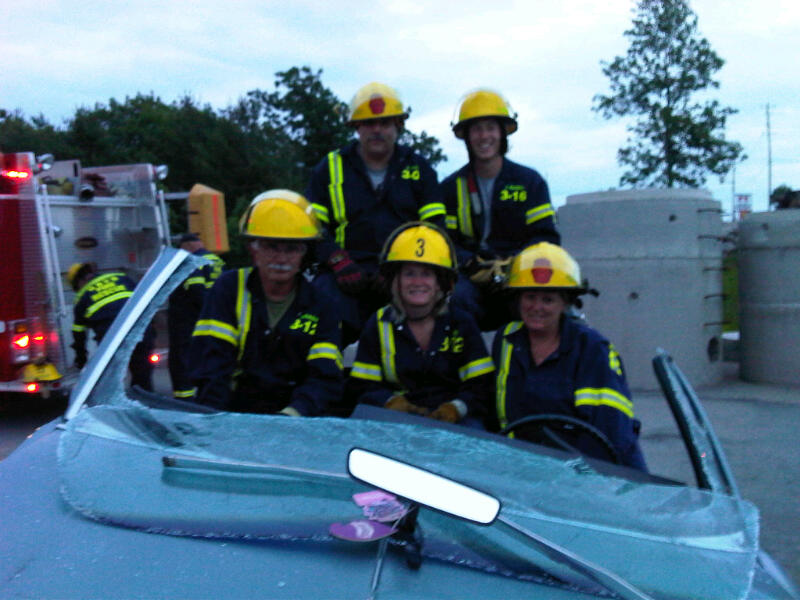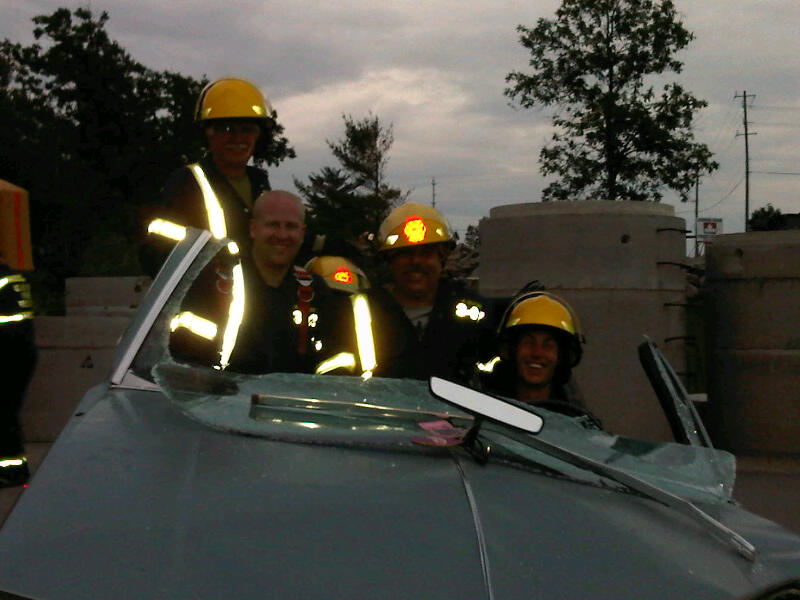
Dispatches
Jennifer Grigg
Features Blogs DispatchesJune 13, 2012, Midland, Ont. – Monday night at training, we did one of my favourite things – auto ex. It’s been a few years since I’ve been on a good auto extrication call (when I say good, I mean in reference to the work we do in performing the extrication, because as any firefighter knows, it’s usually a bad call that requires a “good” extrication, or any extrication for that matter.)
June 13, 2012, Midland, Ont. – Monday night at training, we did one of my favourite things – auto ex. It’s been a few years since I’ve been on a good auto extrication call (when I say good, I mean in reference to the work we do in performing the extrication, because as any firefighter knows, it’s usually a bad call that requires a “good” extrication, or any extrication for that matter.)
We were lucky enough to have two cars to work on, so the first vehicle served as a bit of a refresher for me, an introduction to heavy hydraulics for the rookie in our hall, and practice for the rest of the guys.
We started by blocking the vehicle (thanks, Norm for the pointers . . . it’s amazing how one can forget how to do these things), breaking all the glass, and then practising different techniques to make purchase points. We removed one of the doors by using the spreaders to pop the Nader bolt and the cutters to cut the hinges.
 |
| Jen and the Georgian Bay crew at their Monday night auto ex training. |
As Mr. Oakley Sunglasses pointed out during training, there are many ways to skin a cat, and many techniques used in auto ex. With the second vehicle, we took both passenger side doors off together, which I’d not seen before. It was pretty slick, I must say. We also performed a dash roll, first with spreaders and then with a ram, using the spreaders as an anchor point. To top it all off, we removed the roof by cutting the A posts on both sides, making cuts in the roof by the B posts, and then flipping the roof up and over with the assistance of a crow bar.
Although I needed a few pointers on some things, there were other things I remembered very clearly. For instance, how heavy those bloody tools are, especially when working above your waist. I’m sure not built like Popeye and had a few sore muscles Tuesday morning, like in the area of my sternum. Not sure how I managed that . . . didn’t even know there was a muscle there.
I also remembered a very important key in extrication; let the tools do the work. You don’t want to maim yourself in the process of patient removal – it’s somewhat counterproductive. The Glas-Master is an old nemesis of mine, too. I seem to recall having a heck of a time whenever I tried to saw around the outside of the windshield. However, I seemed to do better with that Monday night that in the past. To my chagrin, it was the center punch that gave me grief.
 |
| Members of the Georgian Bay Fire Department relax after their auto ex training – before the sore muscles kick in! |
All in all, it was a great training session and I appreciate the time and effort the two trainers put into it. Good work guys!
Blogger’s note: Tuesday morning at 7 a.m., we were paged out to a single-vehicle MVC with two patients trapped. The vehicle was in a ditch, on its roof. Auto extrication was performed by the same guys who were at training the night before. The irony wasn’t lost on anyone.
That’s why we train the way we do.
Jennifer Mabee is a volunteer with the Township of Georgian Bay Fire Department in Ontario. She began her fire career with the Township of Georgian Bay in 1997 and became the department's fire prevention officer in 2000 and a captain in 2003. She was a fire inspector with the City of Mississauga Fire and Emergency Services before taking time off to focus on family, and is excited to be back at it. E-mail her at jhook0312@yahoo.ca.
Print this page